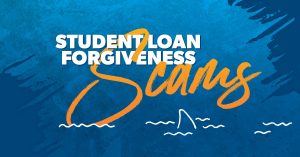Fifty-nine percent of Americans are uncomfortable with the amount of money they have stashed in an emergency fund. When people need cash quickly in a difficult situation, they may turn to resources like payday loan apps.
These digital cash advance platforms offer a quick and easy way to borrow money, often without the stringent credit checks associated with traditional loans. But with convenience comes a cost — many users are caught in a cycle of debt.
Before using one of these apps, get to know how they work, their pros and cons, the risks of falling into a debt spiral and some alternatives that can offer better financial stability.
How payday loan apps work
Payday loan apps, or digital cash advance apps, provide small loans with fast approval and easy access.
These apps allow users to borrow money — sometimes as little as $50 or as much as $500 — with minimal requirements. Typically, borrowers link the app to their bank account, and the loan is automatically repaid on their next payday, making the process simple and fast.
Key features of payday loan apps
- Automatic repayment: The loan is repaid automatically once the borrower’s paycheck is deposited into their linked account. Some apps allow borrowers to extend repayment for an additional fee.
- Fast funding: Users can receive funds almost instantly or within one business day, depending on the app.
- No credit check: Most payday loan apps do not require a credit check, making them accessible to people with poor or no credit.
- Small loan amounts: These apps usually allow for small loans, often starting at $50, with limits of around $500 or more, depending on the borrower’s history.
Popular payday loan apps like EarnIn, Dave and Brigit offer users cash advances before their next paycheck without traditional loan processes. However, while they provide quick access to money, the high fees and short repayment windows make them risky for long-term financial health.
Pros and cons of a cash app loan
Before using a payday loan app, weigh the benefits and potential downsides.
Pros
- Avoid banks and bank fees: Many users don’t have access to a traditional bank or may want to avoid overdrafts and non-sufficient fund fees, which could translate to an annual rate of 915 percent.
- Convenient borrowing: With everything handled through a mobile app, users can request and repay loans without visiting a physical location.
- No credit check: Payday loan apps don’t usually require a credit check, which means they’re accessible to a broad range of users, including those with low or no credit.
- Quick access to cash: One of the most significant advantages of payday loan apps is their speed. Users can often receive funds within minutes, making these apps helpful in emergencies.
Cons
- High fees: While these apps may not call their charges “interest,” they often come with fees that, when annualized, can resemble extremely high interest rates. For example, a $100 instant loan with a $10 fee might seem manageable, but that translates to an annual percentage rate (APR) of 260 percent or more.
- No impact on credit: Although payday loan apps don’t require a credit check, they also don’t help users build their credit. On-time repayment isn’t reported to credit bureaus, meaning there’s no long-term benefit to using these services responsibly.
- Risk of overdrafts: Payday loan apps automatically withdraw funds from a linked bank account when repayment is due. If the account lacks sufficient funds, the borrower may incur overdraft fees, worsening their financial situation.
- Short repayment terms: The automatic repayment feature means borrowers typically have just a few weeks — sometimes only days — to repay the loan. They may need to borrow again if they’re still short on funds, starting a vicious cycle.
The danger of a debt cycle
One of the most significant concerns surrounding payday loan apps is their potential to trap borrowers in a cycle of debt. These apps can offer quick relief, but their high fees, short repayment periods and automatic withdrawals often lead users to rely on them repeatedly. Here’s how payday loan apps can contribute to a debt cycle.
High fees and APR
Payday loan apps typically charge a fee for each loan. While the fee might seem small in absolute terms, it can equate to a triple-digit APR, compared to the average 21 percent APR for a credit card. Some payday lenders charge $15 or more per $100 borrowed for a two-week loan term.
Over time, these fees add up, making it harder for borrowers to break free from depending on short-term loans.
Short-term relief, long-term impact
Borrowers often turn to payday loan apps for temporary relief, but the short repayment period can cause financial strain if their circumstances don’t improve before the loan is due. Many borrowers end up taking out a new loan to cover the old one, perpetuating the cycle of borrowing and repayment.
Automated repayment risks
The automatic withdrawal feature is convenient but can backfire. If a borrower doesn’t have enough money in their account when the app pulls the repayment, they might face overdraft fees and additional fees for not paying the loan back on time. This only deepens their financial hole, making it even more difficult to get back on track.
Stress and financial instability
Borrowing repeatedly from payday loan apps can lead to financial stress and instability. Constantly scrambling to cover loan repayments can create anxiety, especially if borrowers feel trapped with no clear way to pay off their debts.
Alternatives to cash advance apps
While payday loan apps may seem like an easy solution, they’re often not the best option for long-term financial stability. Several alternatives can help you manage unexpected expenses without the high risk of falling into a debt spiral.
1. Personal loans
Personal loans from a bank or credit union generally come with lower interest rates and more favorable terms than payday loan apps. These loans often allow for longer repayment periods and provide the opportunity to build credit if you make payments on time.
2. Credit card cash advances
While cash advances on credit cards also carry high interest rates, they tend to be lower than payday loan fees. Additionally, credit card companies allow borrowers more time to repay, which can ease financial strain in the short term.
3. Employer paycheck advances
Some employers offer paycheck advances, allowing employees to access earned wages before payday. These advances usually come without fees or interest, making them a safer option than payday loan apps.
4. Emergency savings
Building an emergency fund is a proactive way to prepare for financial emergencies. Even setting aside a small amount of money each month can prevent the need to rely on high-cost payday loans.
5. Nonprofit assistance
Several nonprofit organizations provide financial assistance in the form of no-interest loans or grants for individuals in need. The Temporary Assistance for Needy Families (TANF) program offers financial support to low-income families, including opportunities to save in Individual Development Accounts (IDAs) with matching funds This helps recipients cover essential expenses without relying on high-cost loans.
6. Peer-to-peer lending
Peer-to-peer lending platforms like Kiva or Prosper connect borrowers directly with individual lenders. While interest rates vary, these loans often offer better terms than payday loans, making them a viable alternative for those needing quick cash.
The bottom line
While payday loan apps can offer fast financial relief, they come with considerable risks. Their high fees, short repayment terms and automated withdrawals can easily trap users in a cycle of debt that is difficult to break. For those facing financial difficulties, exploring alternatives like personal loans, credit card advances or employer paycheck advances can provide more sustainable solutions.
It’s essential to carefully consider your options and avoid relying on payday loan apps as a regular financial tool. If you frequently turn to these apps, it may be time to reassess your financial plan and explore resources that can help you build more long-term stability.
Frequently asked questions
Read the full article here















